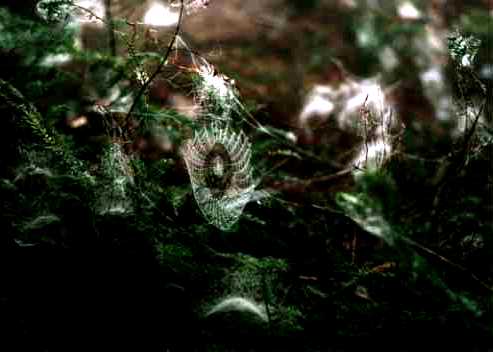 |
 |
One might think that the work of busy arachnids belongs in an art of biology competition, but the physics is in the uniform milky appearance of the webs. This effect is seen in cottage country, in late summer, when the lakes are warmer than the overnight air temperature. Evaporation raises the humidity level past the dew point and condensation occurs on the leaves and webs. This effect is seen in cottage country, in late summer, when the lakes are warmer than the overnight air temperature. Evaporation raises the humidity level past the dew point and condensation occurs on the leaves and webs in the forest. But why do the webs look white? One could imagine the threads with a clear, crystalline look or alternatively one could imagine a rainbow of colours. The first would indicate that much of the light was passing right through, with some of it being refracted. A rainbow would indicate that much of the light was suffering a single scattering and such scattering has a wavelength dependence to the angle. But a milky look means that the light is suffering multiple scattering, which indicates, because water doesn't do that, that the web itself is involved. The water beading on the threads acts like a lens to focus background light onto the thread which then scatters the light in an arbitrary direction.